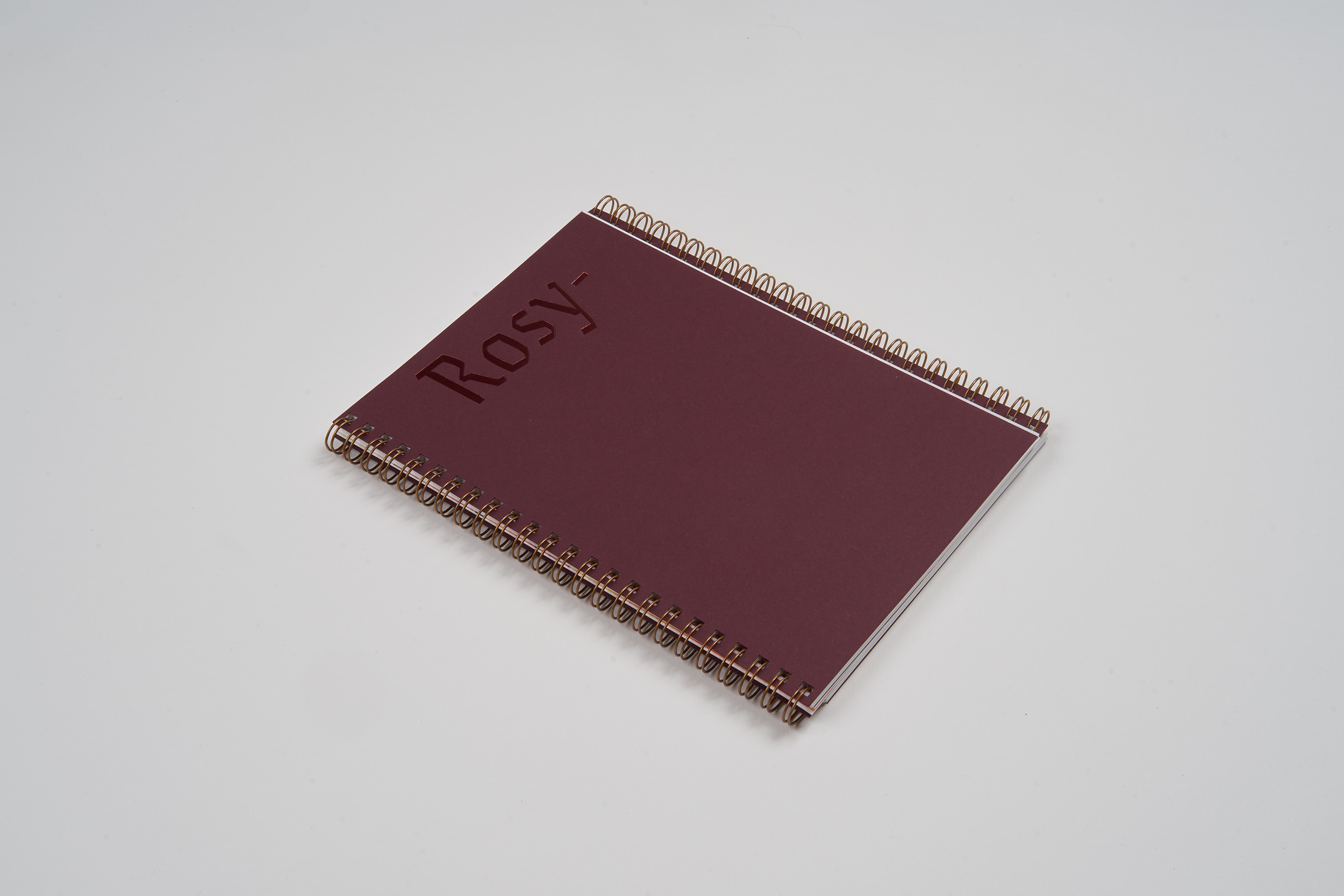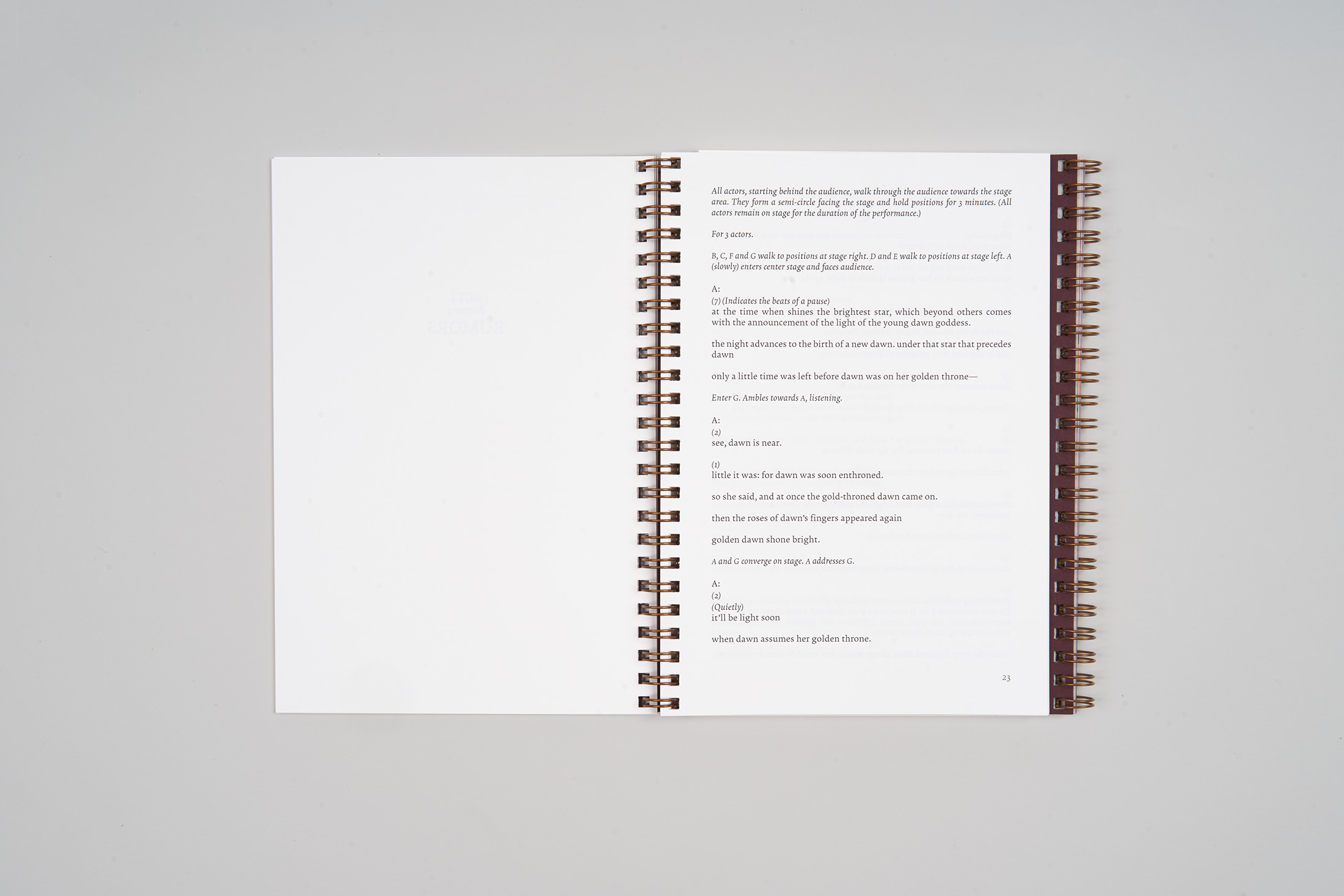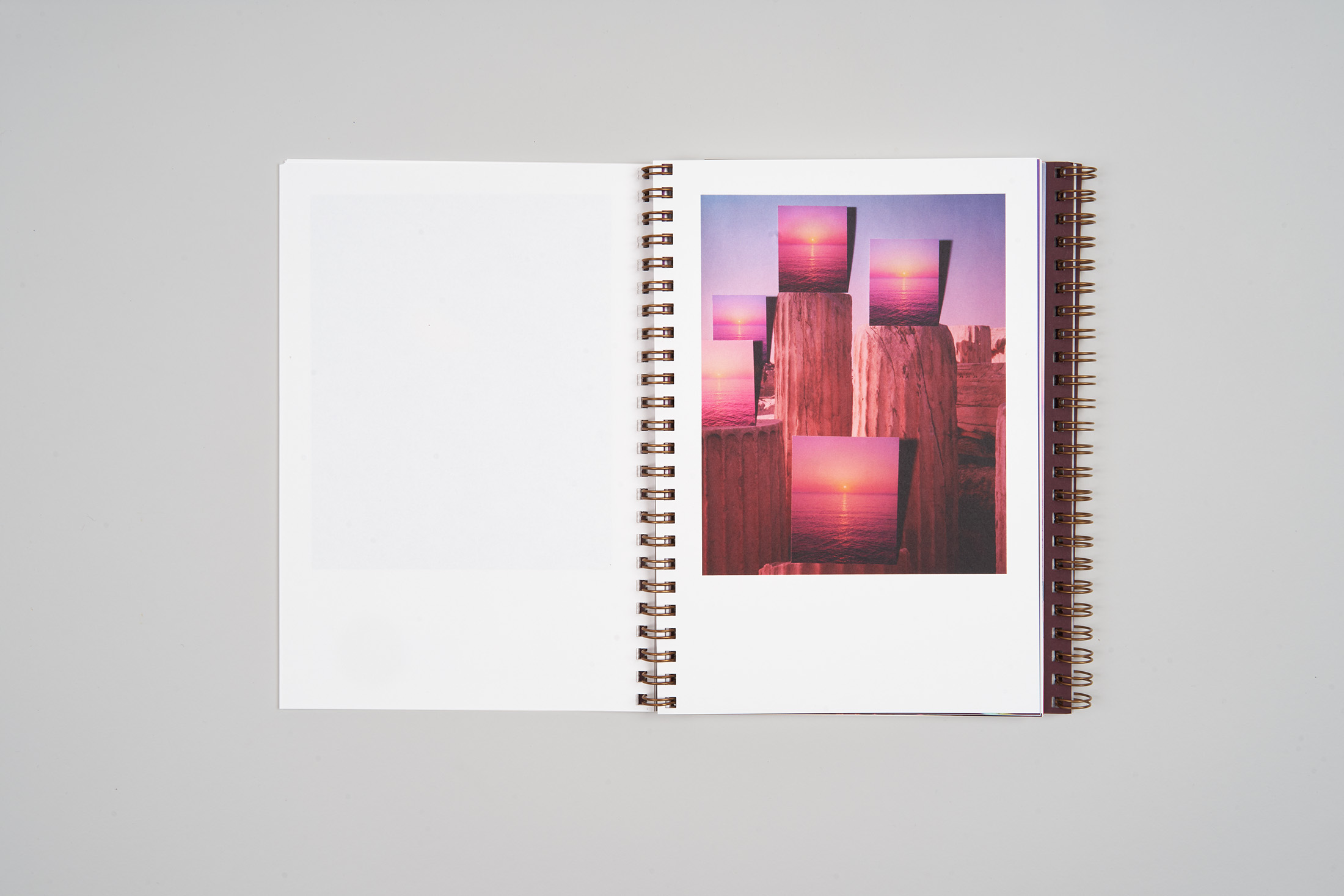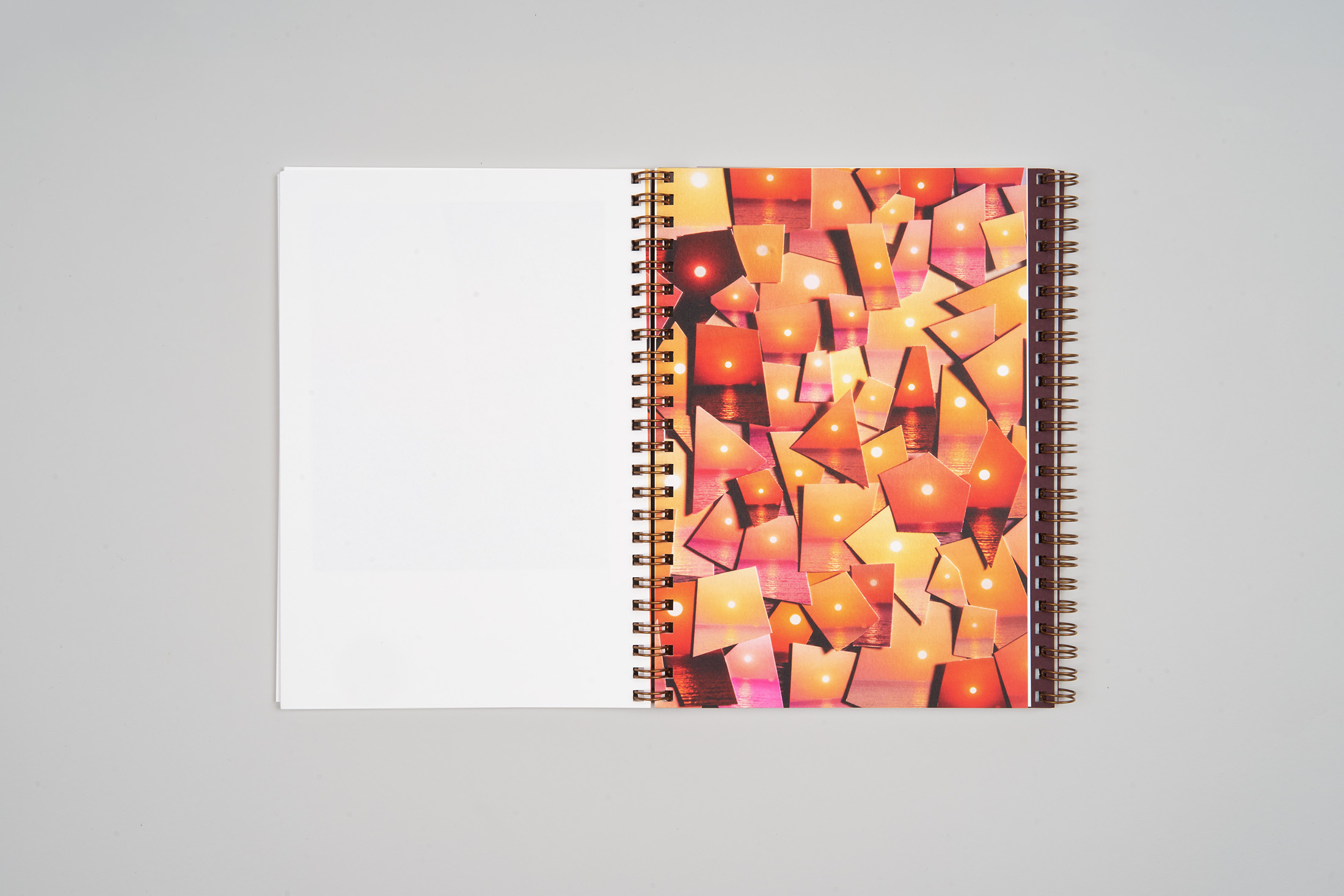ROSY-CRIMSON$38
Kim Hoeckele
Kim Hoeckele’s book Rosy-Crimson brings her script of the same name together with photographs made in response. Assembled from text taken from Homer’s epic The Odyssey, Hoeckele’s script erases its titular character, Odysseus, replacing him with the minor goddess dawn. After compiling the revisionist script, Hoeckele constructed a collection of photographs in dialog with the text. Rosy-Crimson brings both together in an experimental binding.
The phrase “dawn’s rosy fingers” recurs throughout The Odyssey over 20 times as a mnemonic device to aid an orator in retelling the epic poem. Hoeckele appropriated every iteration of this phrase and mention of dawn across thirteen English translations of The Odyssey to create the non-narrative script for Rosy-Crimson. Since 2016, Rosy-Crimson has been performed in galleries, in a museum, and most recently, outdoors at sunset. These variations in venue, as well as rotations of cast, are in themselves translations, drastically altering what is conveyed through each performance.
The photographs in Rosy-Crimson act as another form of translation. Reinterpreting one image of sunset taken over the Mediterranean Sea, Hoeckele created a collection of 28 photographs that refer to cycles in time in The Odyssey. Taken together, Rosy-Crimson questions the powerful and subjective role of the translator: Whose stories get told and whose stories are shifted to the margins?
Includes an essay written by Wendy Vogel.
Kim Hoeckele
Kim Hoeckele’s book Rosy-Crimson brings her script of the same name together with photographs made in response. Assembled from text taken from Homer’s epic The Odyssey, Hoeckele’s script erases its titular character, Odysseus, replacing him with the minor goddess dawn. After compiling the revisionist script, Hoeckele constructed a collection of photographs in dialog with the text. Rosy-Crimson brings both together in an experimental binding.
The phrase “dawn’s rosy fingers” recurs throughout The Odyssey over 20 times as a mnemonic device to aid an orator in retelling the epic poem. Hoeckele appropriated every iteration of this phrase and mention of dawn across thirteen English translations of The Odyssey to create the non-narrative script for Rosy-Crimson. Since 2016, Rosy-Crimson has been performed in galleries, in a museum, and most recently, outdoors at sunset. These variations in venue, as well as rotations of cast, are in themselves translations, drastically altering what is conveyed through each performance.
The photographs in Rosy-Crimson act as another form of translation. Reinterpreting one image of sunset taken over the Mediterranean Sea, Hoeckele created a collection of 28 photographs that refer to cycles in time in The Odyssey. Taken together, Rosy-Crimson questions the powerful and subjective role of the translator: Whose stories get told and whose stories are shifted to the margins?
Includes an essay written by Wendy Vogel.
Production Details
5.5 × 8 in
Book 1: 60 pages, Book 2: 48 pages
Softcover
Dos à Dos Wire-O bound
Cover Material: Colorplan 350gsm, Claret
Cover Details: foil stamping on front/back cover
4/4 digital offset
5.5 × 8 in
Book 1: 60 pages, Book 2: 48 pages
Softcover
Dos à Dos Wire-O bound
Cover Material: Colorplan 350gsm, Claret
Cover Details: foil stamping on front/back cover
4/4 digital offset
Colophon
Edition of 100
Designed by Kim Hoeckele
Bound by Annie Hillam
2022
Edition of 100
Designed by Kim Hoeckele
Bound by Annie Hillam
2022






REQUEST A QUOTE
SCHEDULE A CONSULTATION
Lorem Ipsum
